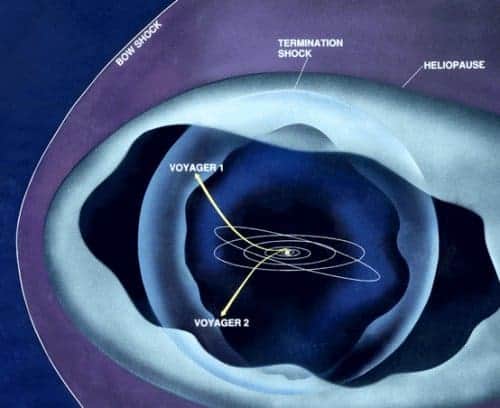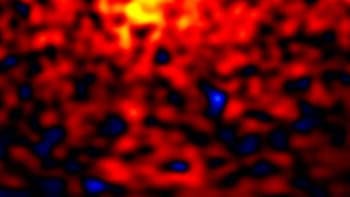
Over 30 years after it was launched, NASA’s Voyager 2 space probe has reached the “edge” of the solar system.
In doing so the probe has confirmed that the heliosphere — an immense bubble-like structure surrounding the Sun and formed by the solar wind — is not a perfect sphere but is a squashed ellipsoid.
Voyager 2 crossed the “heliospheric termination shock” in August 2007 at a distance of about 12bn kilometers from the Sun. This is about twice as far from the Sun as Pluto and about 1.5bn kilometers closer to the Sun than where its partner Voyager 1 crossed this threshold in 2004. This confirms telescope-based observations of the flow of hydrogen and helium in this region made in 2005, which suggested that the heliosphere is squashed by interstellar magnetic fields.
This termination shock is a turbulent region is where the solar wind — a fast-moving stream of electrically charged particles expelled by the Sun in all directions — slows down significantly. It marks the boundary between the inner heliosphere — where the solar wind dominates — and the heliosheath, where the effects of the interstellar gas begin to dominate.
Scientists are hopeful the data gathered by Voyager 2 as it travels beyond the shock will give them an insight into how the Sun interacts with the rest of the Milky Way. Although Voyager 1 crossed this threshold four years ago, its plasma sensor had stopped working by then – forcing scientists to estimate many of properties of the shock that they had hoped to measure directly.
Working plasma sensor
Voyager 2 has a working sensor, allowing the probe to measure directly the velocity, density and temperature of the solar wind at this juncture. Coupled with the fact that Voyager 2 had at least five shock crossings over a couple of days thanks to the tumultuous nature of the shock front, researchers were able to study the shock front in unprecedented detail – publishing their first findings in a series of six papers in Nature (Nature 454 63-81).
The data reveals the shock front is indeed irregular and turbulent as expected. However, the temperature of the heliosheath is about one million Kelvin, which is about ten times cooler than had been predicted. This indicates that the energy is being transferred from the solar wind in collisions with interstellar particles, which are accelerated to high speeds at the shock.
Researchers expect the two Voyager spacecraft to continue providing invaluable observations of the heliosheath for years to come. Scientists are hopeful that the probes will continue to function for another decade, by which time they should cross the heliopause — giving us glimpse of pure interstellar space.
In the meantime, NASA plans to launch the Interstellar Boundary Explorer later this year, which aims to image the entire termination shock and heliosheath from Earth orbit, providing further insight into the interaction between the heliosphere and interstellar space.



